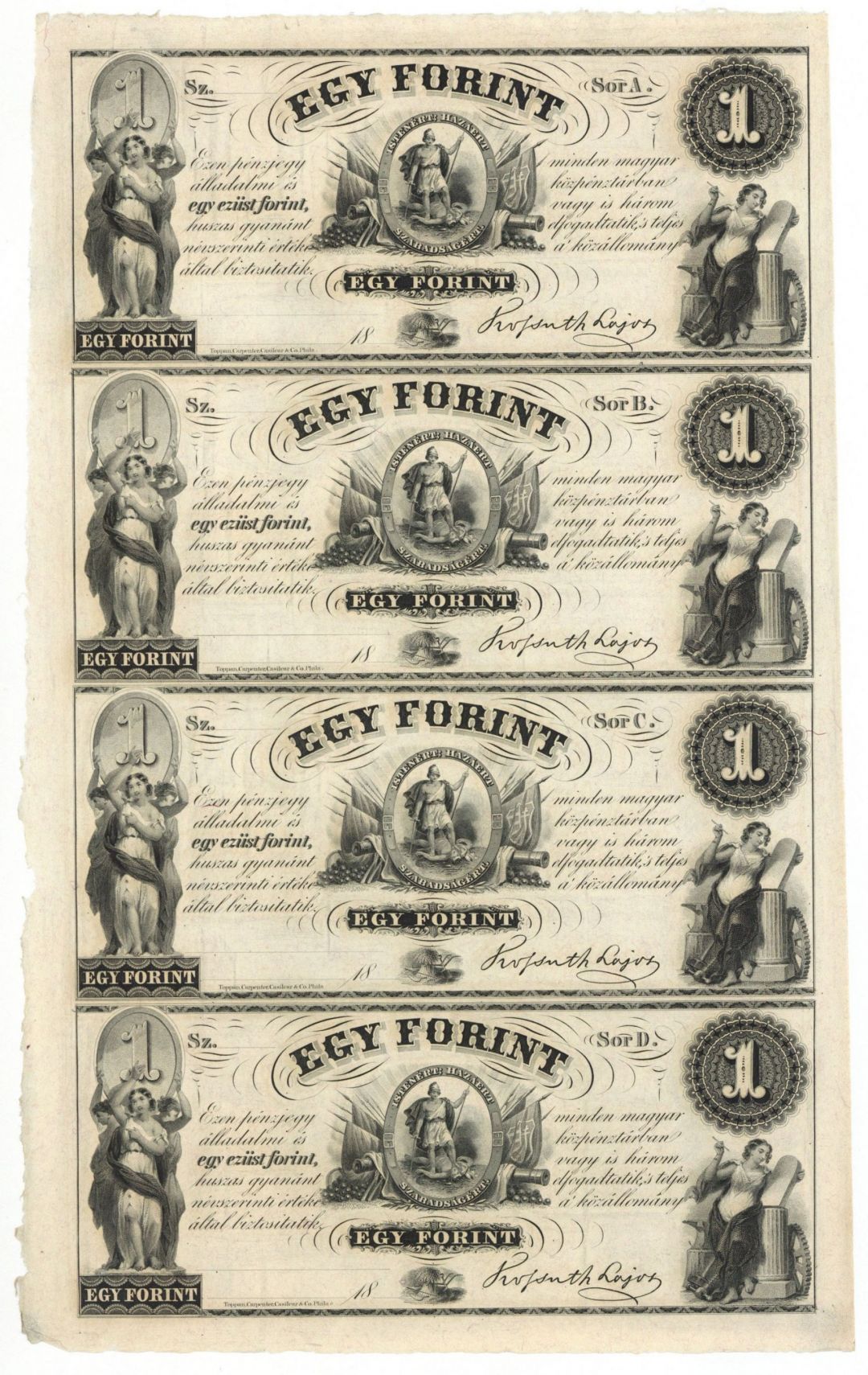Egy Forint - 1¢/1¢/1¢/1¢ - Hungary - 1840's circa Uncut Obsolete Sheet - Broken Bank Notes
Inv# OH1115 Foreign Paper Money1¢/1¢/1¢/1¢ Uncut Obsolete Sheet. Hungary. The forint serves as the official currency of Hungary. Initially, it was subdivided into 100 fillér, although fillér coins are no longer in use. The forint was introduced on August 1, 1946, marking a significant milestone in the stabilization of the Hungarian economy following World War II, and it maintained relative stability until the 1980s. The shift to a market economy in the early 1990s negatively impacted the forint's value, with inflation peaking at 35% in 1991. From 2001 to 2022, inflation remained in single digits, and the forint was declared fully convertible. However, in May 2022, inflation surged to 10.7% due to the ongoing war in Ukraine and economic instability.
As a member of the European Union, the Hungarian government may eventually aim to replace the forint with the euro, although there is currently no set timeline for this transition under the present administration. The term 'forint' is derived from the city of Florence, where gold coins known as fiorino d'oro were minted starting in 1252. In Hungary, the florentinus (later known as forint), also a gold-based currency, was introduced in 1325 during the reign of Charles Robert, influencing several other nations. Between 1868 and 1892, the forint referred to the currency of the Austro-Hungarian Empire, which was called Gulden in German, and it was divided into 100 krajczár (krajcár in contemporary Hungarian orthography; cf German Kreuzer).











Ebay ID: labarre_galleries